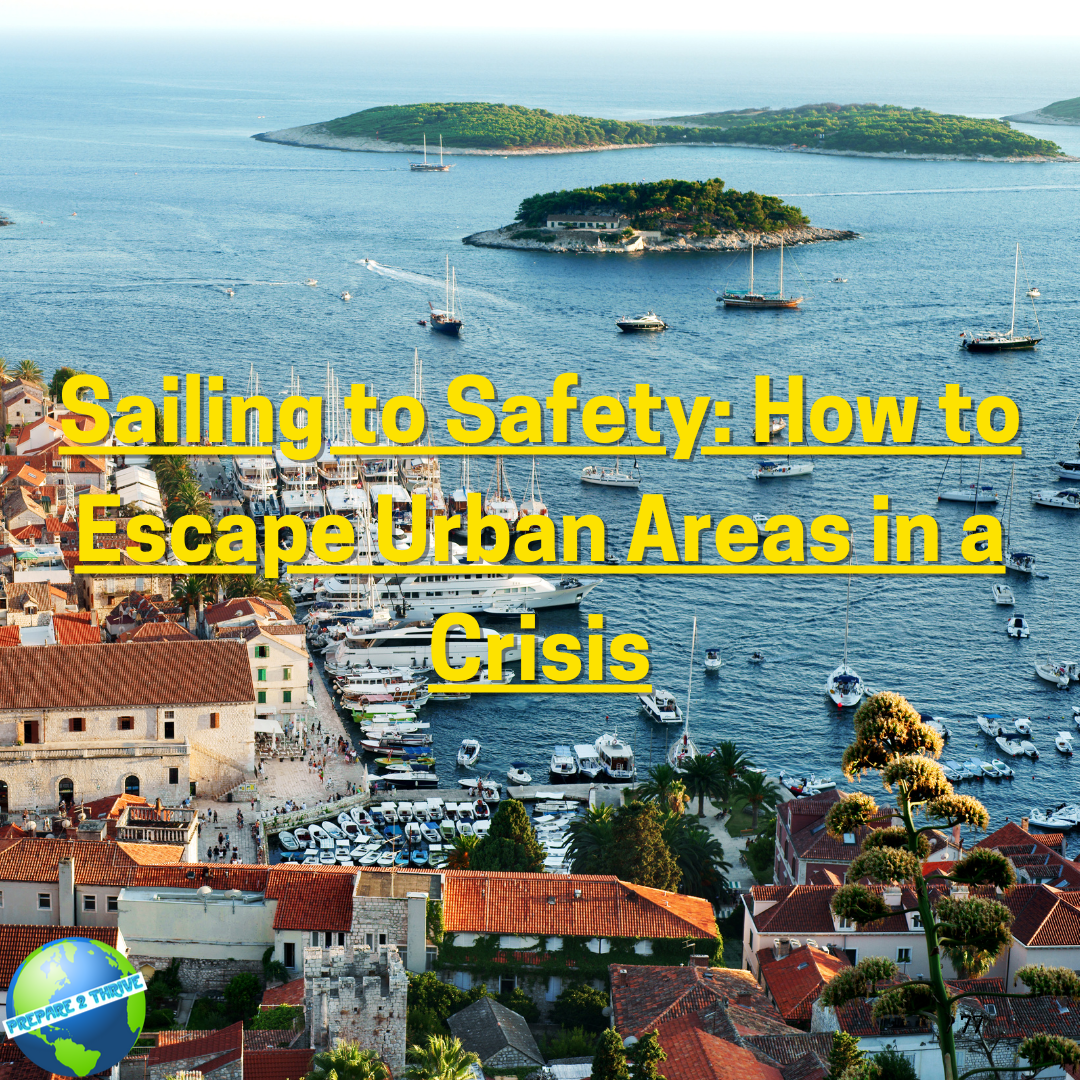Urban areas can be bustling centers of activity, but they can also be dangerous during crises. Natural disasters, civil unrest, terrorism, pandemics, and other crises can quickly turn urban areas into hazardous environments. In such situations, finding a means of escape can be challenging. Sailing can be an effective and safe means of escaping urban areas in a crisis. This article will explore how sailing can be used as a means of escape during a crisis, and provide guidance on how to prepare for and undertake such a journey.
Understanding Urban Crisis Scenarios and Risks
Urban areas can be subject to various types of crises, including natural disasters and man-made disasters. Natural disasters such as floods, earthquakes, wildfires, and hurricanes can occur without warning, while man-made disasters such as civil unrest, terrorism, and pandemics can develop over time. Identifying and evaluating the risks associated with each crisis is essential in determining the severity and urgency of the situation.
For example, in the case of a natural disaster such as a hurricane, flooding can quickly occur in low-lying areas of a city, making escape by car or foot challenging. In contrast, in the case of civil unrest, the risk of violence and looting can make it unsafe to remain in an urban area, and rapid evacuation may be necessary.
Choosing the Right Sailboat and Route for Escaping Urban Areas
 Choosing the right sailboat and route is crucial for a successful escape from an urban area during a crisis. Sailboat options can vary depending on size, speed, and storage capacity. In a crisis situation, it is essential to choose a sailboat that is seaworthy and reliable, with adequate storage for food, water, and other essential supplies. Sailboats with a shallow draft can also be advantageous, as they can navigate shallow waters and get closer to shore.
Choosing the right sailboat and route is crucial for a successful escape from an urban area during a crisis. Sailboat options can vary depending on size, speed, and storage capacity. In a crisis situation, it is essential to choose a sailboat that is seaworthy and reliable, with adequate storage for food, water, and other essential supplies. Sailboats with a shallow draft can also be advantageous, as they can navigate shallow waters and get closer to shore.
Researching and comparing potential routes, consulting nautical charts, and weather forecasts can help identify safe routes. It is also important to identify and evaluate potential safe havens along the route. These can include marinas, ports, and other sheltered areas where the sailboat can be anchored and the crew can take shelter.
Preparing for Sailing to Safety
Preparing for sailing to safety involves packing essential items such as food, water, fuel, and other necessities. It is also essential to secure the home or urban base before departing. Securing the property and minimizing potential threats can help to reduce risks. This can involve securing windows and doors, turning off gas and electricity, and locking up valuables.
Developing a contingency plan for emergencies and unexpected situations can also help ensure preparedness during the journey. This can include having backup navigation equipment, extra fuel, and alternative routes planned in case of unexpected weather conditions or other obstacles.
Navigating and Sailing to Safety
Navigating and sailing to safety requires following the planned route and adjusting for weather, currents, and other variables. It is important to stay aware of weather conditions and to adjust the route if necessary to avoid dangerous conditions. In addition, maintaining communication with other boats and with shore-based authorities can help ensure that the crew is aware of any emerging risks or situations that may affect the journey.
Coping with emergencies and unexpected situations such as equipment failure, storms, and other crises requires a calm and collected approach. The crew should be prepared to work together to address any challenges that arise, and to make decisions based on the safety of the crew and the sailboat.
Reaching the safe haven, arriving safely, and establishing a temporary base is the ultimate goal. The crew should be prepared to secure the sailboat and to make any necessary repairs or adjustments. They should also be prepared to live aboard the sailboat for an extended period, as it may be necessary to wait out a crisis.
Conclusion
Sailing to safety can be an effective means of escaping urban areas during a crisis, but it requires careful planning, preparation, and execution. By understanding the risks associated with urban crises, choosing the right sailboat and route, and preparing for emergencies and unexpected situations, it is possible to safely navigate and sail to safety.
While sailing may not be a viable option for everyone, it is essential to have a plan in place for escaping urban areas during a crisis. Whether it is by car, foot, or sailboat, having a well-prepared plan can make all the difference in ensuring safety during a crisis.
In conclusion, it is important to recognize the benefits and challenges of using sailing as a means of escape during a crisis. Sailing provides a unique opportunity to escape quickly and safely, but it also requires careful planning, preparation, and execution. As such, we must take the time to plan and practice our escape routes for emergency situations, and be prepared to adapt to changing circumstances.
Finally, we should emphasize the importance of preparedness and adaptability in crisis situations. Whether it is through sailing, other means of transportation, or simply being prepared to shelter in place, we must always be prepared to adapt to unexpected situations and take the necessary steps to ensure our safety and the safety of our loved ones.
Hashtags: #sailingtosafety #urbancrisis #emergencypreparedness #escape #sailboat #navigating #safehaven #naturaldisasters #manmadedisasters
